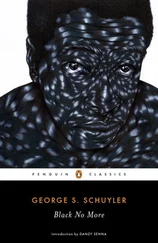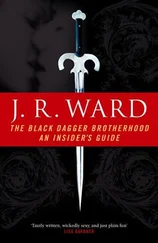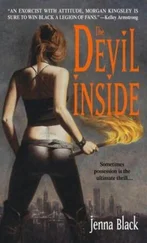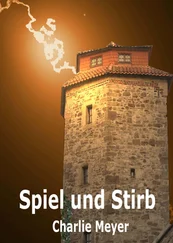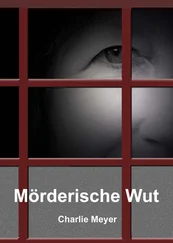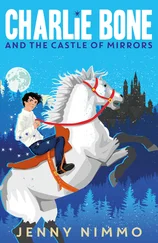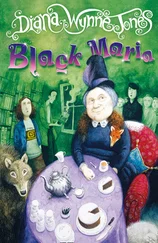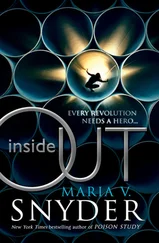Shaheen Baig (casting director):The White Bear auditions were distressing, because the content was so intense. What I mainly remember from the sessions is actors screaming!
Carl Tibbetts:Lenora said it was one of the strangest jobs she’s ever had. She wanders around in her tracksuit, not looking her best, as beautiful as she is, and screaming a lot! We were careful to pace it: we knew which scenes were coming up, and when to let the terror go, otherwise it was going to get exhausting for her. The episode does have some moments of calm, where she can take her foot off the gas a bit.

Joel Collins:It was like making an action movie: something like 28 Days Later . You’re never going to invent that entire world, because the tone has to feel apocalyptic. So you use reality to create a feeling. With something like the petrol station, you smash windows and you do what you’d do on an action movie. Then you build a set for the finale, when the wall splits in half – a theatrical reveal which makes the illusion more shocking. And suddenly you’ve got an audience. So throughout the film, you build your way up to making it feel more controlled.
Carl Tibbetts:When Charlie designed the balaclava symbol, that felt like a crucial turning point. He’s very big on those things: graphics, ticker-tape, the way the news appears, anything like that. I’ve seen people dressed at Comic Con as Michael Smiley’s character, with that balaclava and symbol, so these things take on a life and identity of their own.
Charlie Brooker:I think I drew that logo in the script. I chose it as just an ominous but simple symbol, after experimenting with lots of different things. It’s a bit like an upside-down Y, or a road sign for two lanes that are going to merge into one. I’ve started seeing those symbols everywhere – not as a hallucination, but because people often tweet me pictures of paving stones where they’re laid out like that.
Annabel Jones:The sequence in the woods, I find particularly horrifying. Obviously we wanted it to be nasty – I think we actually toned down the language and cut some of the action from this scene in the edit as it was so off-putting – but when Victoria is pleading with the onlookers to intervene and everyone carries on filming and no-one is helping, it’s just horrifying.
Carl Tibbetts:Our big reveal, obviously, is that the whole thing’s been an illusion.

The Manhunt video game provided inspiration for the costumes in White Bear .
Charlie Brooker:I suppose White Bear was our first one with a really big twist. We carefully balanced the flashbacks to what Victoria had done, as we were quite worried we’d give too much away. Very few people see that twist coming. I’m sure a few did but not many.
Carl Tibbetts:When Victoria puts her shoes on and steps outside for the first time, the actual white bear’s hidden in the garden. She doesn’t notice, but it’s visible at some point by the fence. Mostly, for me, it was all about those first five or ten minutes when we’re with Victoria as she wakes up and looks around. It was about sticking with her as much as possible. Even when we’re inside the petrol station with her, we never go outside the glass. What helps make it more frightening, is you’re constantly with her throughout the experience until the very end. As we experienced the park with her the first time around, we very much shot on handheld cameras, close to her, very intense and personal, one on one, making you feel you were her.

We never came out of that point of view until the end reveal that it’s been one long, deliberate trick, one big show being put on for Victoria – and we are her, so that show is being put on for us. During the end credits stuff, where we reveal the theme park side of things, I wanted to shoot that very much still and static as an observer. The viewer mightn’t be cognisant of that change, but it has an effect.
The Perspex van that Victoria’s in towards the end, we called that the Wicker Van! The Wicker Man was a big touchstone for me in White Bear . Edward Woodward’s investigation was never going to go anywhere, because it was all a performance put on for him.
Annabel Jones:At the time, there had been protests with people calling for Jimmy Savile’s body to be dug up, so our Wicker Van in the theme park didn’t feel that exaggerated.
Charlie Brooker:In the original cut, Victoria’s van journey went on even longer! Half the crowd is digitally inserted in, but there were quite a few people there, and they were encouraged to scream and shout. Some of them were given phones and you see footage from some of these phones within the climax.
Annabel Jones:The showbiz ending is fabulously eerie and then I love the fact that the ‘Day Two’ reveal is just so throwaway, intercut into the end credits. Just snatched glimpses of another day at the theme park. That felt quite bold. Cutting these last few scenes down like this was an idea Charlie had in the edit. It made White Bear one of the shortest episodes we’d ever done. A normal Channel 4 hour was 45 to 48 minutes but White Bear was about 41 minutes. Channel 4 were happy to support it, though.

Jon Opstad (composer):My biggest challenge musically was how to characterise the ending when everything resets and we’re back in the same room with Victoria waking up. We’re seeing the same events as at the beginning, but in a completely different light. So the music at this point needed to somehow have a different character that helped emphasise this shift, while not feeling like it came from a different score entirely.
Up to that point the score has been very electronic, so I decided that introducing some contrasting acoustic elements could help with the shift in perspective. Going entirely acoustic didn’t fit the world that we’re in, though, so I finally landed on the pizzicato cellos motif that the final cue was built from, then built some spidery atonal lines over this to maintain the sense of discomfort.
Charlie Brooker:I’m always quite interested in the reasons why people don’t like a particular episode. Sometimes people don’t like White Bear because they can’t conceive this would happen and it’s not financially viable to build this whole theme park around one criminal. Which is true. It makes a sort of dream-nightmare logical sense at the end. It makes enough sense that I think it’s okay. It should leave you feeling a bit sick and not quite sure how you feel about what you’ve just watched. You feel sympathetic towards this person but also repulsed by what they did. It’s a nice sense of queasy vertigo.
Carl Tibbetts:I don’t know what the answer to White Bear is, but whatever Victoria did, does not mean that we should take pleasure in torturing somebody. I don’t think she knows what she did, and it’s not really about whether she’s right or wrong. The piece is about not torturing people, whether they’ve killed children or not. For me, the question of Victoria’s guilt or innocence is slightly irrelevant.
Читать дальше





